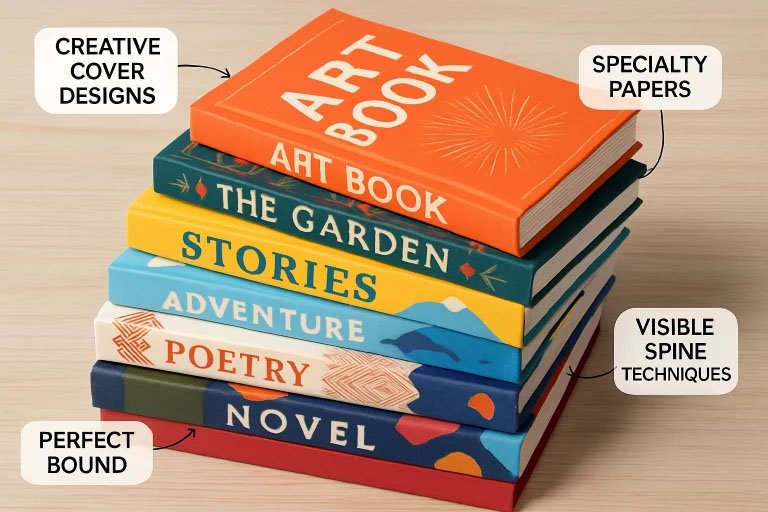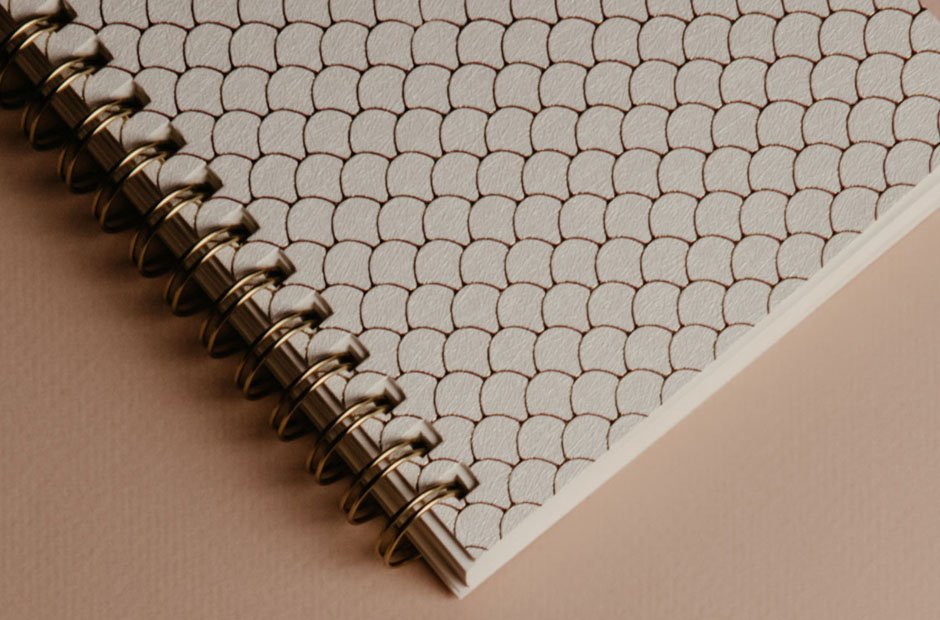Perfect binding has long been favored in the publishing industry for its crisp, professional finish, cost-effectiveness, and adaptability across countless genres and project types. While many may regard it as a simple method to assemble paperback books, the rise of advanced printing technologies has transformed perfect binding into a powerful canvas for creative expression. It’s no longer just about holding pages together—perfect binding lets authors, artists, and designers compose visually striking, uniquely tactile, and truly unforgettable books. Thanks to the convenience of services like quick turn around perfect bound books, even independent creators can now access high-caliber production, bringing ambitious ideas to life without complex logistics or prohibitive costs. Perfect binding’s flexibility means you’re never limited to standard designs. Instead, virtually any vision is achievable, from elegant art albums to interactive journals, marketing materials, and more.
Fully harnessing the creative possibilities of perfect binding requires attention to every component—cover art, paper selection, interactive features, and finishing touches all contribute to the book’s sensory appeal and usability. Projects of any scope, from boutique short runs to larger-scale publishing, benefit from this method’s customization and polish. In a world where presentation matters more than ever, perfect binding stands out as a cost-efficient solution and a vehicle for delivering innovative, memorable books that leave readers excited to turn every page.
Custom Cover Designs
The cover of a book is more than just a protective outer layer—it’s the critical first impression, piquing interest and telling a visual story before a single page is turned. Perfect binding allows for a seamless, full-wrap cover design that includes the front, back, and spine, offering a broad and cohesive canvas for creativity. Leveraging this real estate, designers can instantly utilize captivating images, vivid color palettes, distinctive typography, and bold graphics to communicate the book’s personality and purpose. Advanced finishing techniques, such as embossing and debossing, add texture and dimension, turning title lettering or artwork into a tactile experience. Foil stamping in gold, silver, or custom hues adds a dazzling, reflective quality that signals luxury and attention to detail. Together, these design strategies set your book apart in a crowded marketplace and ensure that it captures attention from near and far, inviting readers to pick it up and explore its contents.
Incorporating Specialty Papers
Paper choice profoundly affects the look and feel of a finished book, influencing every aspect from visual presentation to how the book feels in the reader’s hands. While traditional matte or glossy finishes deliver a reliable, professional appearance, experimenting with specialty papers can completely redefine your book’s sensory and visual appeal. Textured stocks such as linen, felt, or laid finishes introduce a tactile element, making covers truly unique and enjoyable to touch. Recycled and eco-friendly papers resonate with environmentally conscious readers and lend authenticity to creative or artisanal projects. Colored or metallic papers can be used for section dividers, mood pages, or even entire covers to make a book vibrant and memorable. The right choice of cover stock—perhaps with soft-touch laminates or extra-thick weights—openly communicates luxury and durability. For interiors, mixing substrates by interleaving vellum, kraft, or translucent pages provides creative markers between chapters or features, enhancing engagement and discovery. When selecting specialty papers, consider thickness and flexibility to ensure compatibility with the perfect binding process and to maintain a durable spine that withstands repeated handling.
Adding Interactive Elements
Books today can be dynamic, hands-on experiences rather than static collections of printed pages. Integrating interactive features within the perfect binding format can dramatically increase reader engagement and add a surprise ‘wow’ factor. Fold-out pages work beautifully to present panoramic photographs, architectural plans, or elaborate infographics extending beyond standard page dimensions. Built-in pockets can house supplementary items such as maps, business cards, activity sheets, or resources, making the book more versatile and adaptable. Further, adding inserts—pull-out posters, sticker sheets, or even bespoke bookmarks—adds layers of surprise and enjoyment, particularly in creative genres like children’s literature, travelogue, and instructional manuals. To successfully incorporate these elements, careful design planning is essential to ensure components fit comfortably within the overall page count and that the glued spine maintains strong adhesion and longevity. When executed skillfully, interactive elements transform the reader’s journey from passive reading to memorable participation.
Experimenting with Binding Techniques
While standard perfect binding involves adhering pages to a squared-off spine with strong glue, modern bookmaking invites hybrid approaches for greater functionality and visual intrigue. For instance, pairing perfect binding with lay-flat technology allows a book to lie open completely flat, a feature invaluable for cookbooks, design catalogs, manuals, or photo portfolios where hands-free viewing is practical. Exposed spine designs, where the glue and stitching are intentionally visible, create a minimalist, industrial aesthetic appreciated in high-end art, fashion, or architecture books. Special scored hinges can be added along the spine, making thicker books easier to open while preventing cracks or splits. Combining these techniques enhances the tactile and functional qualities of the book, fusing perfect binding’s cost-efficiency with luxury and usability typically reserved for more premium binding formats.

Personalizing with Embellishments
Embellishments act as the “finishing flourish” that transforms any book from ordinary to extraordinary and turns it into an heirloom, a cherished gift, or a collector’s item. Spot UV coating is a popular enhancement that applies a glossy finish to selected areas—typically titles, logos, or images—creating a striking contrast against a matte background and raising visual hierarchy. Die-cut cover windows or custom shapes offer playful glimpses into a book’s interior or highlight special motifs. Practical touches like attached ribbon bookmarks, integrated elastic closures, or even debossed author signatures communicate meticulous attention to detail and provide additional utility. Colored headbands and tail bands, patterned or custom endpapers, and coordinated spine stamping are minor yet meaningful upgrades that elevate the overall aesthetic and experience. Each embellishment tells the recipient that special care and creativity went into the book’s production—a critical factor for high-end publishing, limited editions, and brand-building.
Leveraging Digital Printing
Digital printing and perfect binding are a seamless match, empowering self-publishers, small businesses, and independent creatives to produce professional books at any scale and with rapid turnaround times. Digital presses allow economic printing of small batches or even single copies, reducing inventory costs and making it easier to update content or designs between print runs. This flexibility encourages greater experimentation, from limited edition releases to highly personalized books for niche audiences. The synergy between digital technology and reliable production partners—like those providing quick turn, perfect-bound books—ensures your vision can be realized swiftly, affordably, and without sacrificing quality. By continuously leveraging advances in digital print workflows, you can stay agile, responsive to reader trends, and ready to deliver each book to market confidently.
In summary, perfect binding is far more than a basic publishing staple. Its adaptability allows anyone—from established publishers to first-time authors—to create innovative and captivating books. By thoughtfully combining bold design, specialty materials, reader-interactive elements, and the efficiencies of digital print, you can craft books that are visually beautiful, delightful to handle, and impactful for years to come. Embrace the boundless possibilities of perfect binding to make your next book an actual work of art.



